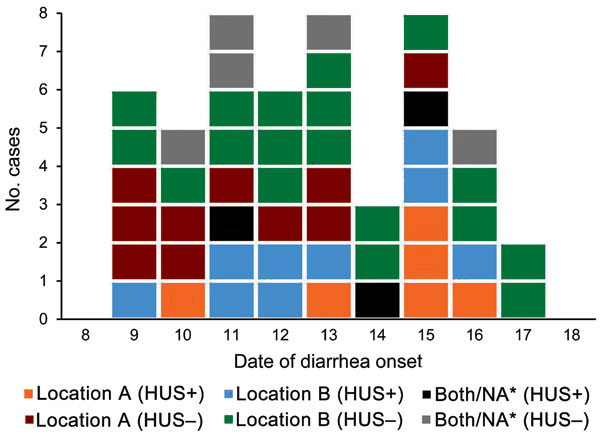Volume 18, Number 1—January 2012
Letter
Identifying Risk Factors for Shiga Toxin–producing Escherichia coli by Payment Information
Figure A1

Figure A1. Patients with Shiga toxin–producing Escherichia coli/hemolytic uremic syndrome (STEC/HUS) by onset of diarrhea and cafeteria visit (location A or B) during STEC/HUS outbreak at a company in Frankfurt, Germany, 2011 (N = 51). NA, visited both cafeterias or specification was missing.
Page created: December 22, 2011
Page updated: December 22, 2011
Page reviewed: December 22, 2011
The conclusions, findings, and opinions expressed by authors contributing to this journal do not necessarily reflect the official position of the U.S. Department of Health and Human Services, the Public Health Service, the Centers for Disease Control and Prevention, or the authors' affiliated institutions. Use of trade names is for identification only and does not imply endorsement by any of the groups named above.